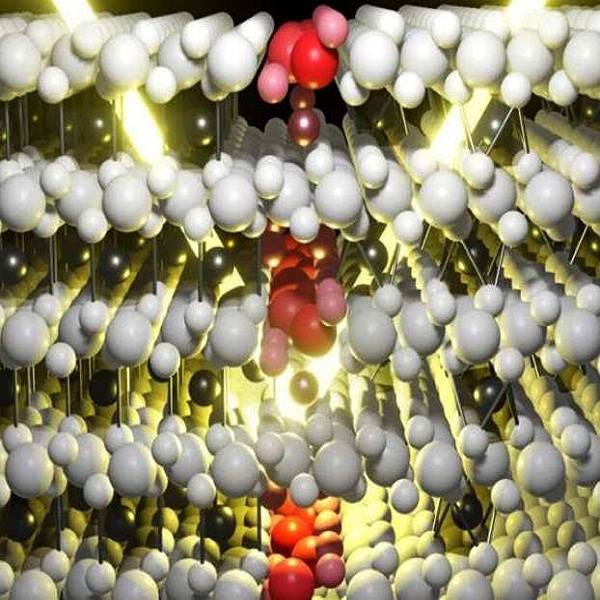Cornell researchers have uncovered the source of a persistent problem limiting the durability of sodium-ion batteries, providing manufacturers with new strategies for powering the 21st century.
The poor durability stems from a specific atomic reshuffling in the battery’s operation—the P2-O2 phase transition—as ions traveling through the battery disorder crystal structures and eventually break them. While the phase transition has been of interest to researchers, the mechanisms behind it have been difficult to study, especially during battery operation.
Key aspects of that mechanism have been revealed by a Cornell team from the lab of Andrej Singer, assistant professor of materials science and engineering, and were published Feb. 1 in the journal Advanced Energy Materials. Doctoral student Jason Huang is the lead author.
The team found that as sodium ions move through the battery, the misorientation of crystal layers inside individual particles increases before the layers suddenly align just prior to the P2-O2 phase transition.
“We’ve discovered a new critical mechanism,” Singer said. “During battery charge, the atoms suddenly realign and facilitate that flawed phase transformation.”
The team was able to observe the phenomenon after developing a new X-ray imaging technique using the Cornell High Energy Synchrotron Source, which allowed them to observe, in real time and in mass scale, the behavior of single particles within their battery sample.
“The unexpected atomic alignment is invisible in conventional powder X-ray diffraction measurements as it requires seeing inside individual cathode nanoparticles,” Singer said. “Our unprecedented high-throughput data allowed us to reveal the subtle, yet critical, mechanism.”
The finding led the team to propose new design options for the type of sodium-ion battery they were using, which they plan to investigate in future research projects. One solution is to modify the battery chemistry to introduce a strategic disorder to the particles just before the flawed transition phase, according to Huang.
“By changing the ratios of our transition metals, in this case, nickel and manganese,” Huang said, “we can introduce a bit of disorder and potentially reduce the ordering effect we observed.”
Huang said the new characterization technique can be used to reveal complex phase behaviors in other nanoparticle systems, but its best application may remain in next-generation energy storage technologies.
“We’re pushing the frontiers of sodium-ion batteries and what we know about them,” said Huang, “and using this knowledge to design better batteries will help to unlock the technology for practical applications in the future.”
Source: Techxplore










